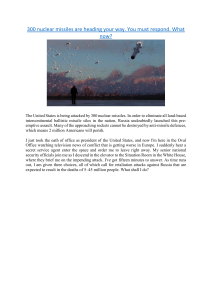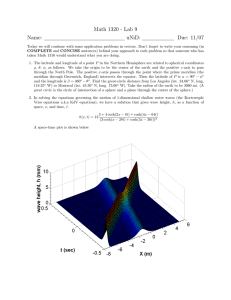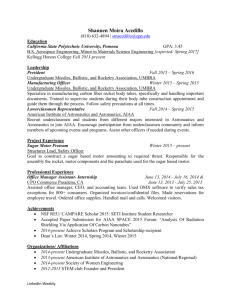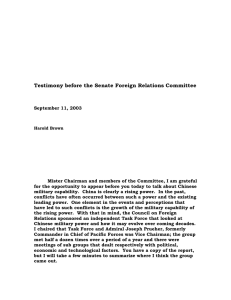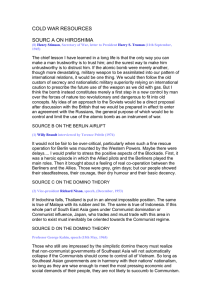CHAIRMAN HUNTER OPENING STATEMENT HOUSE ARMED SERVICES COMMITTEE DUNCAN HUNTER – CHAIRMAN
advertisement
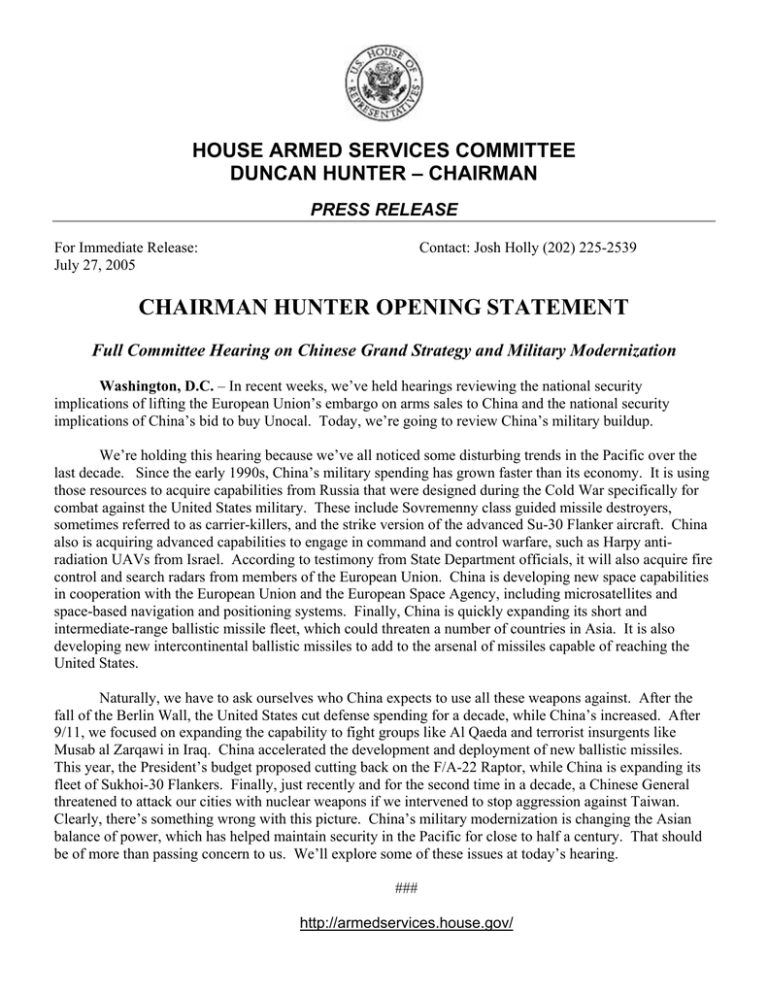
HOUSE ARMED SERVICES COMMITTEE DUNCAN HUNTER – CHAIRMAN PRESS RELEASE For Immediate Release: July 27, 2005 Contact: Josh Holly (202) 225-2539 CHAIRMAN HUNTER OPENING STATEMENT Full Committee Hearing on Chinese Grand Strategy and Military Modernization Washington, D.C. – In recent weeks, we’ve held hearings reviewing the national security implications of lifting the European Union’s embargo on arms sales to China and the national security implications of China’s bid to buy Unocal. Today, we’re going to review China’s military buildup. We’re holding this hearing because we’ve all noticed some disturbing trends in the Pacific over the last decade. Since the early 1990s, China’s military spending has grown faster than its economy. It is using those resources to acquire capabilities from Russia that were designed during the Cold War specifically for combat against the United States military. These include Sovremenny class guided missile destroyers, sometimes referred to as carrier-killers, and the strike version of the advanced Su-30 Flanker aircraft. China also is acquiring advanced capabilities to engage in command and control warfare, such as Harpy antiradiation UAVs from Israel. According to testimony from State Department officials, it will also acquire fire control and search radars from members of the European Union. China is developing new space capabilities in cooperation with the European Union and the European Space Agency, including microsatellites and space-based navigation and positioning systems. Finally, China is quickly expanding its short and intermediate-range ballistic missile fleet, which could threaten a number of countries in Asia. It is also developing new intercontinental ballistic missiles to add to the arsenal of missiles capable of reaching the United States. Naturally, we have to ask ourselves who China expects to use all these weapons against. After the fall of the Berlin Wall, the United States cut defense spending for a decade, while China’s increased. After 9/11, we focused on expanding the capability to fight groups like Al Qaeda and terrorist insurgents like Musab al Zarqawi in Iraq. China accelerated the development and deployment of new ballistic missiles. This year, the President’s budget proposed cutting back on the F/A-22 Raptor, while China is expanding its fleet of Sukhoi-30 Flankers. Finally, just recently and for the second time in a decade, a Chinese General threatened to attack our cities with nuclear weapons if we intervened to stop aggression against Taiwan. Clearly, there’s something wrong with this picture. China’s military modernization is changing the Asian balance of power, which has helped maintain security in the Pacific for close to half a century. That should be of more than passing concern to us. We’ll explore some of these issues at today’s hearing. ### http://armedservices.house.gov/
